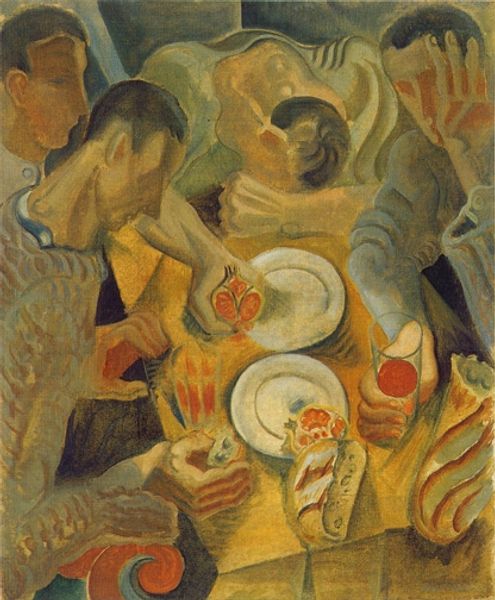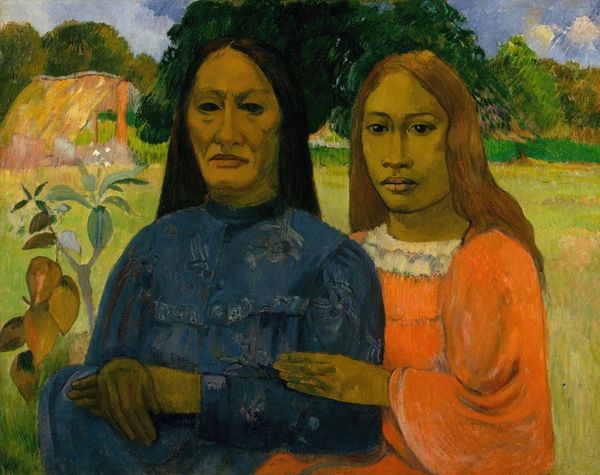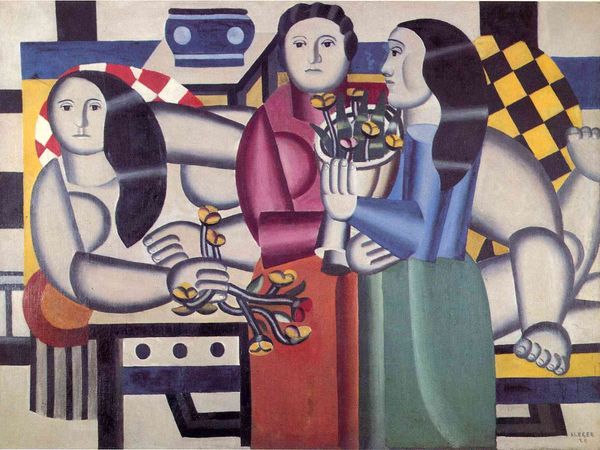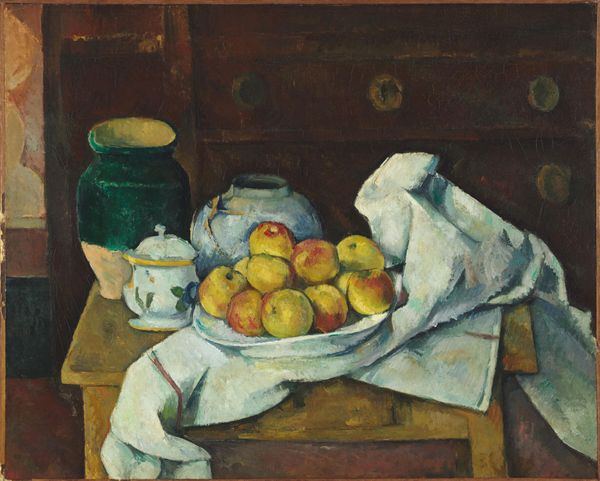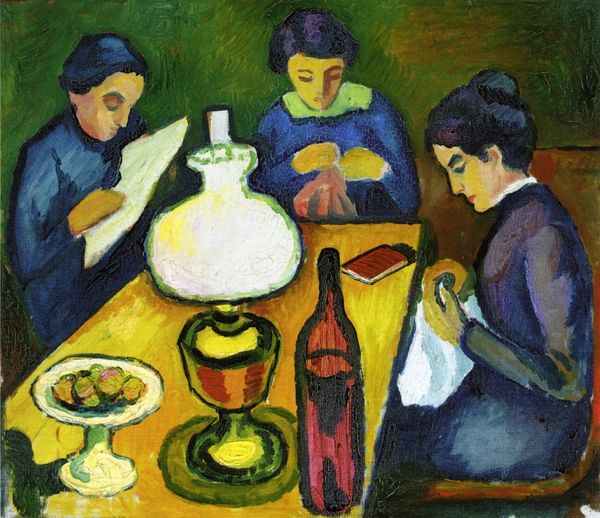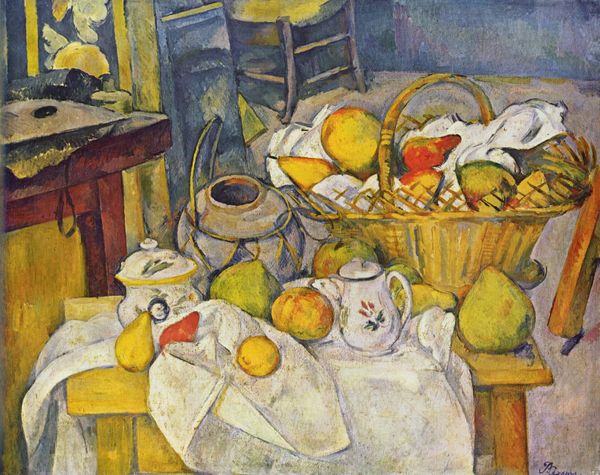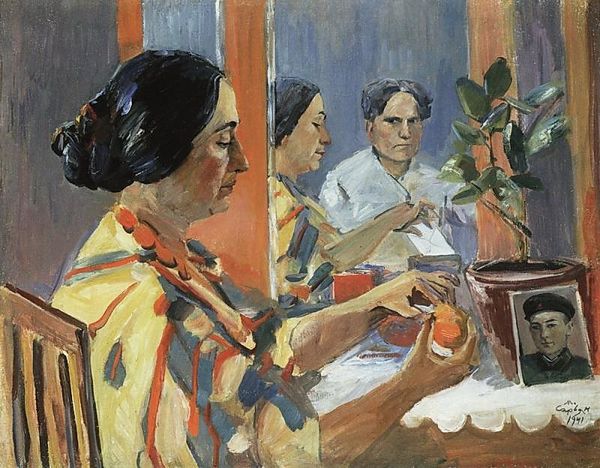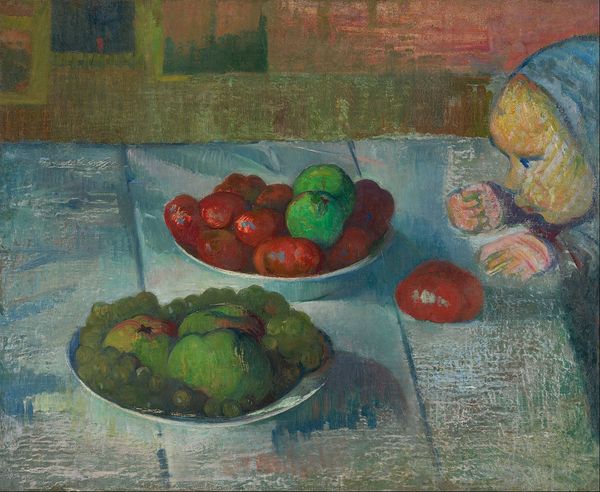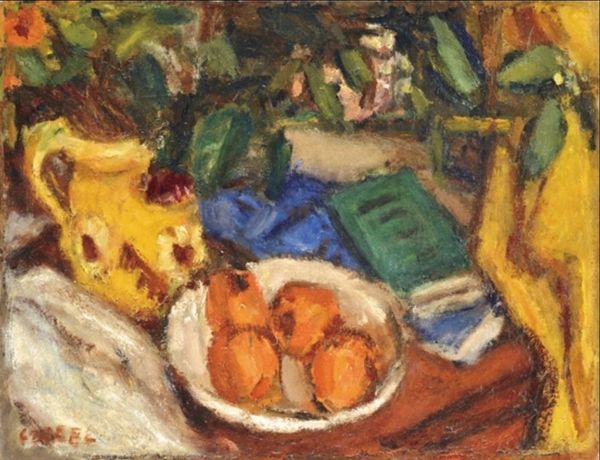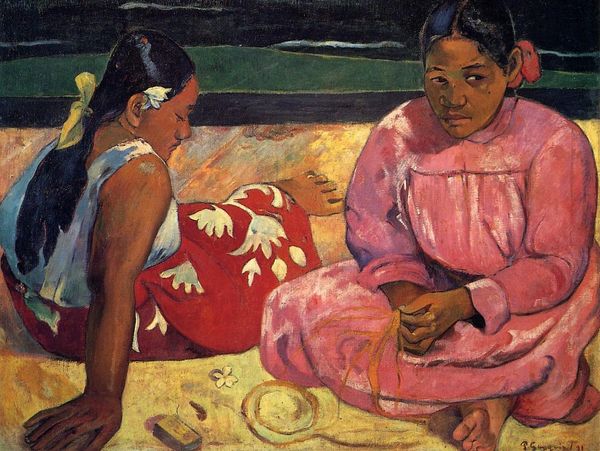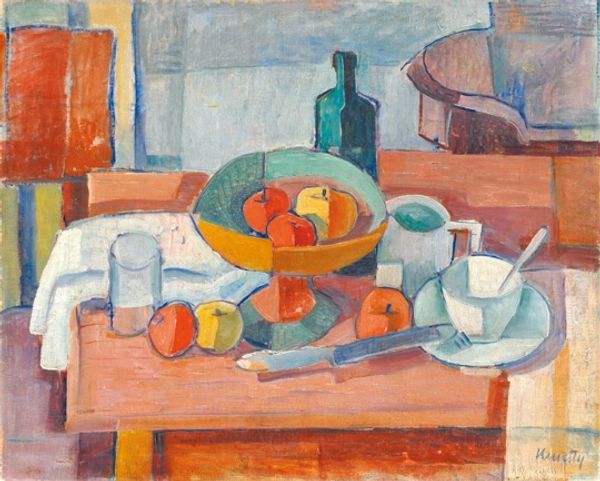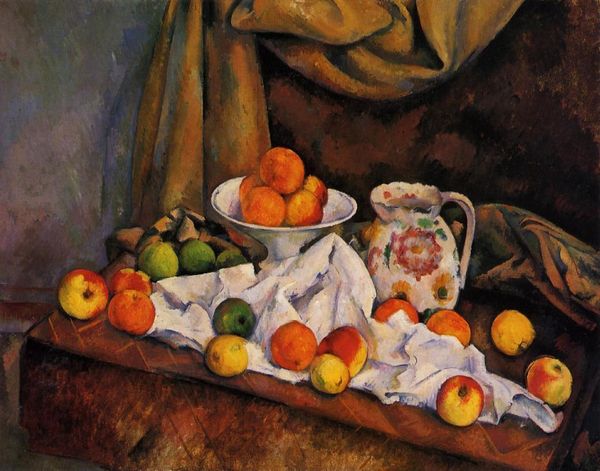
painting, oil-paint
#
figurative
#
painting
#
oil-paint
#
oil painting
#
group-portraits
#
symbolism
#
post-impressionism
#
portrait art
Copyright: Public Domain: Artvee
Editor: So here we have Gauguin's "The Meal," also known as "Bananas," painted in 1891. It’s an oil painting. What really grabs me is how tangible everything feels. The bananas especially look so ripe. What strikes you most about it? Curator: For me, it’s the intersection of labor, materiality, and consumption embedded in this seemingly simple scene. Consider the bananas themselves – their cultivation, transport, and display all speak to broader social and economic forces at play. Editor: I hadn't really thought about that! I was more focused on the composition. Curator: Exactly! But the composition itself serves a purpose. Notice how the arrangement directs our gaze toward the food – raw materials transformed through labor. The people gathered imply a social structure around this act of consumption. The tools for eating imply a culture, a place that these things have come from, that are very removed from Paris. Editor: That makes me wonder, is Gauguin commenting on something specific about labor practices, or is it a broader statement about how we consume? Curator: Perhaps both. Gauguin, in embracing this simplified style and these subject matters, arguably sought to distance himself from the industrialized West. He was engaging with the local modes of production in the French colonies. Consider also that this painting, made with oil paints on canvas, was created and is presented, consumed, for very different purposes. Editor: So, the act of painting it is different than what it is representing? Curator: Precisely! Reflect on the labor required to create this painting, the artist's "hand" in it. Does it connect or conflict with what it represents? Editor: I guess I always considered the artistry more separately from what the artwork depicts. Now I’m wondering if that separation is useful or maybe obscures the bigger picture. Curator: It’s a valuable consideration. By thinking about the material conditions and processes involved, we can better understand art’s complex relationship to society.
Comments
No comments
Be the first to comment and join the conversation on the ultimate creative platform.
